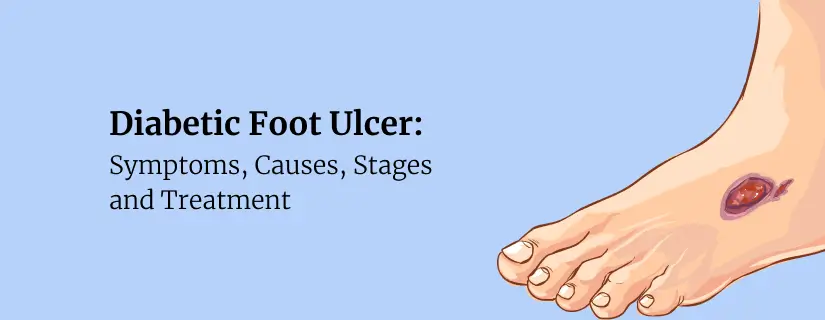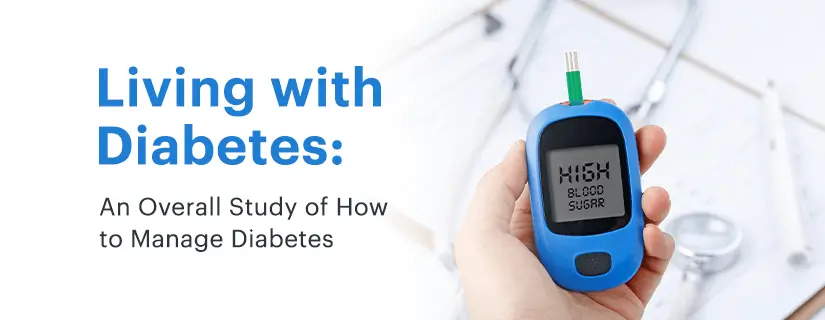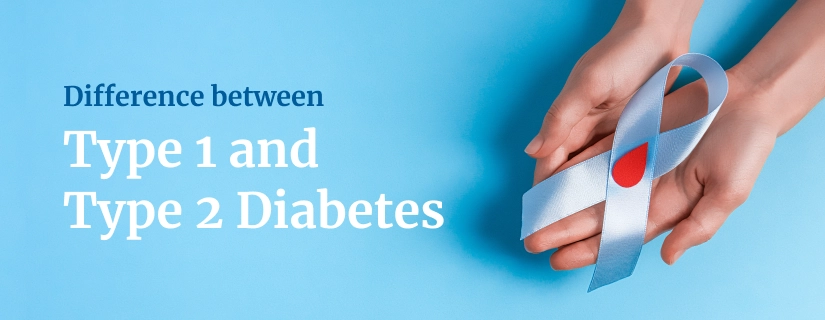-
Doctors
-
Specialities & Treatments
Centre of Excellence
Specialties
Treatments and Procedures
Hospitals & Directions HyderabadCARE Hospitals, Banjara Hills CARE Outpatient Centre, Banjara Hills CARE Hospitals, HITEC City CARE Hospitals, Nampally Gurunanak CARE Hospitals, Musheerabad CARE Hospitals Outpatient Centre, HITEC City CARE Hospitals, Malakpet
HyderabadCARE Hospitals, Banjara Hills CARE Outpatient Centre, Banjara Hills CARE Hospitals, HITEC City CARE Hospitals, Nampally Gurunanak CARE Hospitals, Musheerabad CARE Hospitals Outpatient Centre, HITEC City CARE Hospitals, Malakpet Raipur
Raipur
 Bhubaneswar
Bhubaneswar Visakhapatnam
Visakhapatnam
 Nagpur
Nagpur
 Indore
Indore
 Chh. Sambhajinagar
Chh. SambhajinagarClinics & Medical Centers
Book an AppointmentContact Us
Online Lab Reports
Book an Appointment
Consult Super-Specialist Doctors at CARE Hospitals
Diabetic Foot Ulcer: Symptoms, Causes, Stages, and Treatment
Updated on 21 June 2024

Diabetes is a chronic disease that impacts millions of people globally. Among the long-term complications associated with uncontrolled or poorly managed diabetes are foot ulcers, or open sores that typically occur on the bottom of the feet.
The early stage diabetic foot ulcer can start small but may become infected if left untreated. If the infection spreads it can also lead to amputation of the affected area or even death in severe cases. Diabetic foot ulcers are preventable and treatable if detected early and properly managed.
Symptoms of Diabetic Foot Ulcer
Those with diabetes should routinely monitor their feet for any early signs of ulcers or lesions. Common symptoms to watch for include:
- Changes in skin colour or texture, including redness, blisters, cuts, calluses, or abnormal swelling
- The presence of any moisture, oozing discharge, or foul odour
- Loss of feeling or numbness in the feet caused by nerve damage (neuropathy)
- Tingling, shooting pain, burning, or other discomfort in the feet
If any of these symptoms occur, tell your doctor immediately for further evaluation and specialised care to heal existing ulcers and prevent their progression.
Causes of Diabetic Foot Ulcer
There are several risk factors that raise the likelihood of developing foot ulcers for those with diabetes:
- Poor blood sugar control over an extended timeframe damages nerves and blood vessels, reducing sensation and circulation to the feet.
- Excess pressure or friction on the feet from improper footwear or repetitive impact.
- Minor cuts, blisters or irritation that go unnoticed and become infected due to reduced sensation from nerve damage.
- Limited mobility in the feet and ankles makes it difficult to inspect the feet regularly.
- Alteration in foot shape, deformities of toes due to neuropathy can lead to high pressure under certain areas of feet resulting in callus and ulcer
- Not keeping blood sugar levels controlled can greatly impact the likelihood of nerve issues and foot complications.
Early Stages of Diabetic Foot Ulcer

Diabetic foot ulcers develop through six defined stages that signify worsening conditions. The initial stages offer crucial window where proactive treatment can still reverse damage sustained.
Stage 1: The foot appears normal and healthy with no visible skin changes or wounds.
- Still, nerve issues may silently progress.
- Podiatry exams help detect emerging problems.
- Patients should learn and implement proper foot hygiene and nail care.
Stage 2: Nerve damage and poor circulation are now evident through screenings and tests, but no ulcer has yet formed.
- The patient works closely with medical teams to protect the high risk feet through vigilant monitoring for wounds, adjusting shoes and activity that could cause skin injury.
- Supportive inserts or custom orthopaedic shoes may now fit.
- Discussion on how to inspect your own feet is warranted.
Stage 3: A minor wound in the skin has opened, beginning with an ulcer.
- Wound dressings, antibiotics and rest are instantly implemented to foster healing and prevent infection.
- Offloading the wounds with total contact cast or removable knee high walker may be used.
- Strict foot elevation and rest periods allow reliable wound inspection.
- The patient must report any discomfort or changes promptly as early stage diabetic foot infection can escalate fast.
- Here, the doctors must keep all medical appointments, even interim check-ups to address obstacles early.
Stage 4: The ulcer spot worsens, with swelling and discharge signalling a deeper bacterial infection requiring hospitalisation.
- Intravenous antibiotics combat the spreading infection while lab work identifies the invading organism to tailor treatment.
- Surgery removes dead tissue so healthier tissue can fill wound beds.
- The patient temporarily limits activity further to rest feet until cell regeneration helps normalise the complex ulcer.
- Any delays can imply repeat operations or mortality risk.
Stage 5: Gangrene, or dead foot tissue appears around wounds, usually from untreated infections stemming from immobility and poor glucose control over time.
- Hospitalization, antibiotics, and surgery aim to excise the dead tissue, though the patient must reconcile that some gangrene may remain.
- Strict foot elevation and rest continue along with tobacco cessation.
- The prognosis appears grim if wounds still show no improvement.
- Assessment of blood supply to the foot, improving blood supply as and when clinically warranted becomes important in management of any diabetic foot ulcer.
- Progression equates to mounting risks - patients able to spot early symptoms are better positioned to protect their overall mobility, vitality, and longevity.
This requires understanding the nuanced stages while adopting habits and practices that put health first. Discuss concerns, changes or pain with physicians promptly - delays can radically alter outcomes so be vigilant.
Your foot health future remains, at least partially, within your control through attentiveness, ownership of lifestyle factors, and decisive action at the first signs of ulcers.
Treatment
If a diabetic foot ulcer is identified, typical treatment methods include:
- Careful wound cleaning & bandage changes to facilitate healing
- Antibiotics if infection is present
- Removing any type of pressure from the wound using specialized footwear or by surgical offloading
- Improving blood supply by either Angioplasty or bypass surgery if blood supply to foot is less
- Surgery to remove infected or dead tissue if wounds become severe
- Hospitalisation for serious infections requiring intravenous antibiotics
The primary goals are preventing infection and expanding the ulcer while working to help the wound heal. Strict blood sugar control and following your physician’s guidelines are vital during the healing period to avoid recurrence.
Prevention
The most effective way to avoid diabetic foot ulcers is through diligent preventive care including:
- Stringent blood sugar management to maintain appropriate glucose levels
- Daily inspection of feet for any abnormalities or changes
- Keeping feet clean and dry, moisturized, nails trimmed
- Wear proper fitting shoes and clean socks should be changed daily
- Regular podiatrist visits to monitor for neuropathy, deformities
- Avoid smoking
Lifestyle adjustments like maintaining a healthy diet, exercising regularly, avoiding tobacco use and learning proper foot care techniques significantly lower risks. Detecting and addressing foot problems early is key for those with diabetes.
When To See a Doctor?
Those diagnosed with diabetes should schedule podiatry check-ups once a year to monitor foot health, screen for nerve damage, blood supply and assess personal risk factors for ulcers.
Those diagnosed with diabetes and foot problems like decreased sensation or decreased blood supply should schedule their visit once in 6 months
Any signs of skin changes, irritation or abnormalities should be urgently addressed by your doctor to determine the next steps. Waiting or delaying carelessly allows small wounds to become bigger and seriously infected. So it is crucial to seek immediate care when noticing potential diabetic foot complications. Stay alert – your foot health depends on it.
Conclusion
Diabetic foot ulcers are an unfortunate potential complication impacting many diabetic patients but they can often be prevented or healed if properly addressed. Understanding your personal risk factors, performing routine self-checks and working closely with your medical team can help halt progression to worsened infection, hospitalization, or possible amputation.
Diabetes can be a manageable disease when equipped with the knowledge to take preventative measures reducing your risks of long-term complications. Be proactive and speak up when you spot any early symptoms or foot changes. Consistent care and management help avoid advancement to severe outcomes - this applies to balancing blood sugar levels and monitoring foot health.
ENQUIRY FORM
SELECT CATEGORIES
-
Neurosciences (16)
-
Neurology (37)
-
Neurosurgery (14)
-
Orthopaedics (48)
-
Oncology (33)
-
Obstetrics and gynecology (51)
-
Pulmonology (23)
-
Urology (20)
-
Nephrology (13)
-
Psychiatry (7)
-
Dietetics and Nutrition (111)
-
General Medicine (63)
-
Cardiac Sciences (30)
-
Vascular & Endovascular Surgery and Interventional Radiology (10)
-
Gastroenterology (46)
-
Endocrinology (23)
-
Plastic Surgery (10)
-
Critical Care Medicine (5)
-
COVID-19 (16)
-
Dermatology (16)
-
Emergency Care (1)
-
Ophthalmology (4)
-
Pediatrics (14)
-
Laparoscopic and Bariatric Surgery (8)
-
ENT (15)
-
Kidney Transplant (1)
-
Liver Transplantation and Hepatobiliary Surgery (5)
-
General Surgery (3)
-
Internal Medicine (5)
-
Medicine Information
What Level of Blood Sugar is Dangerous?
YOU MAY ALSO LIKE
RECENT BLOGS
-

Direct Anterior Approach in Total Hip Replacement: Advantages and Challenges
10 April 2025
Read More
-

Zinc Deficiency: Signs and Symptoms, Causes, Treatment
9 April 2025
Read More
-

Chest Pain When Coughing: Causes, Treatment and Home Remedies
9 April 2025
Read More
-

12 Health Benefits of Eating Mushrooms
8 April 2025
Read More
-

7 Health Benefits of Blood Donation You Should Know About
8 April 2025
Read More
-

Implantation Bleeding Vs Periods: Know the Difference
28 February 2025
Read More
-

Bloating During Ovulation: Symptoms, Causes and Remedies
28 February 2025
Read More
-

Itching During Dengue: Causes, Treatment and Home Remedies
18 February 2025
Read More
Have a Question?
If you cannot find answers to your queries, please fill out the enquiry form or call the number below. We will contact you shortly.























